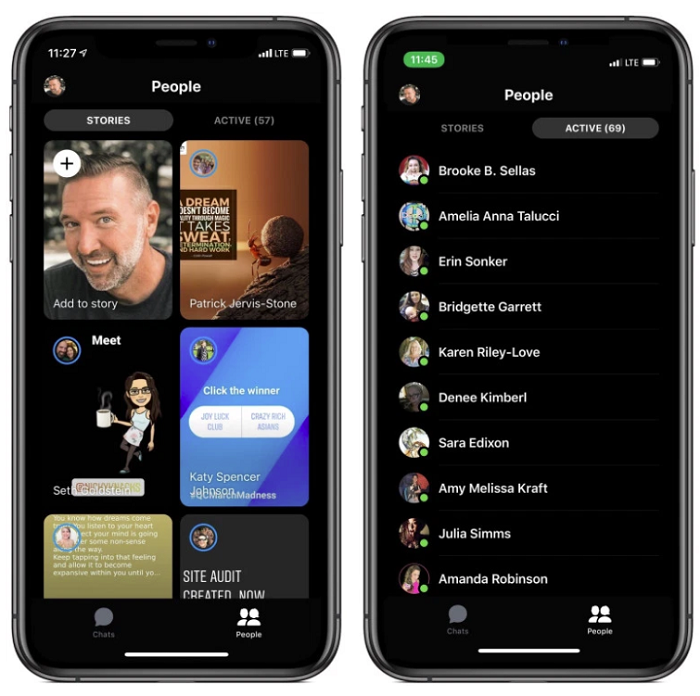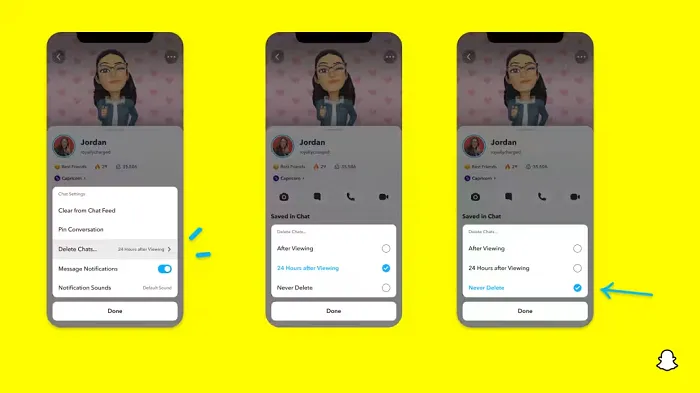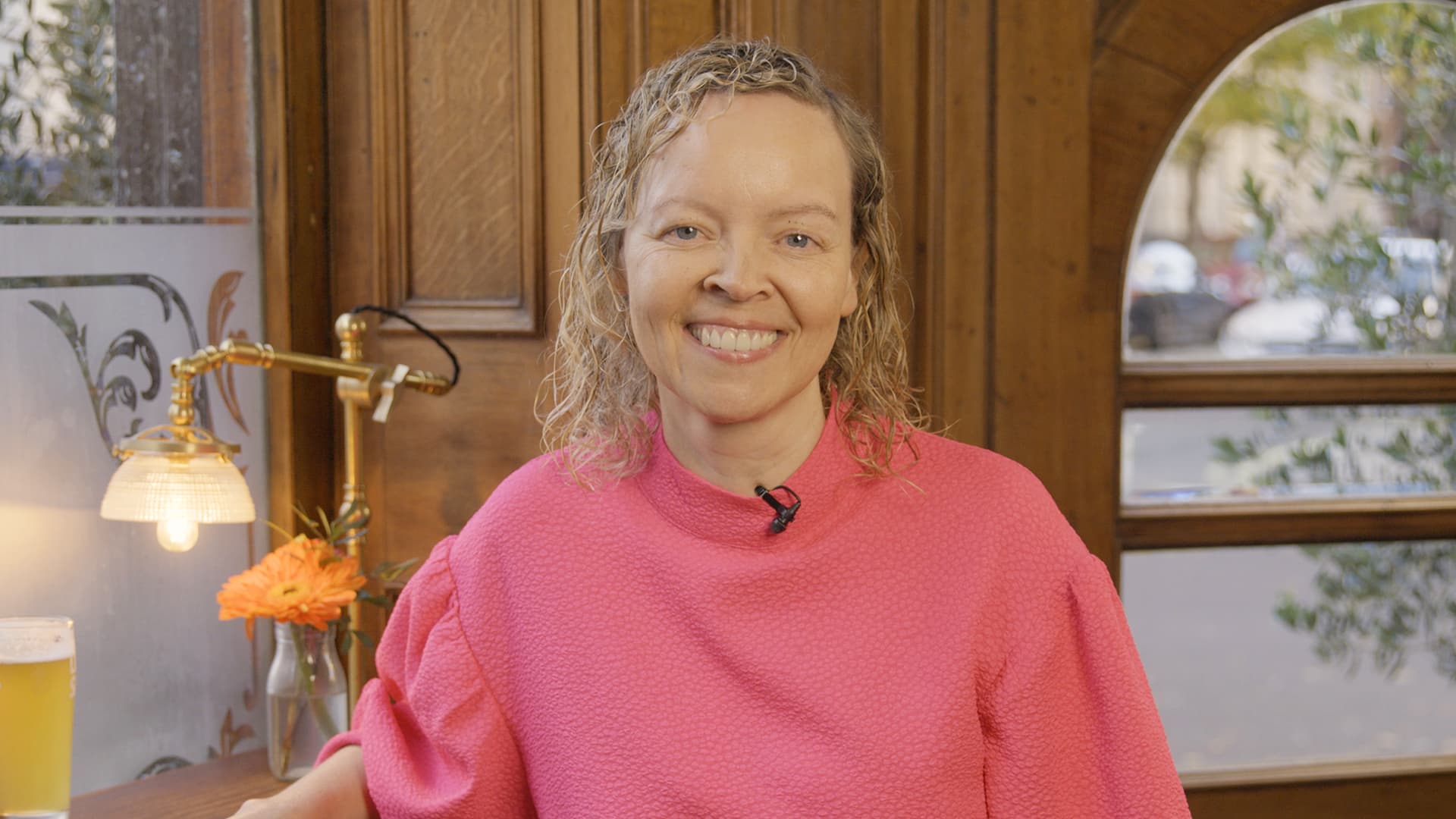SOCIAL
Facebook’s Rolling Out a New Design for Messenger Which Will See The Removal of the Discover Tab

After first announcing its intention to simplify Messenger back in 2018, Facebook is now close to launching the next stage, with TechCrunch reporting that The Social Network is rolling out an updated layout for Messenger which eliminates the ‘Discover tab’, taking it down to simply ‘Chats’ and ‘People’ as your in-app navigation options.

As you can see in this example, provided by social strategist Jeff Higgins, there are now only two tabs, which puts the focus squarely on your private conversations – here’s a shot of the current Messenger layout for reference:

As noted, that aligns with Facebook’s push to make Messenger more focused. Back in 2018, then chief of Messenger David Marcus noted that:
“Over the last two years, we built a lot of capabilities to find the features that continue to set us apart. A lot of them have found their product market fit; some haven’t. While we raced to build these new features, the app became too cluttered. Expect to see us invest in massively simplifying and streamlining Messenger this year.”
Facebook has slowly been working towards this goal since, and this will be the biggest shift to date along these lines.
As you can see in the example, Stories will also get added attention. In the new layout, when you tap on the ‘People’ tab, the initial screen will be a showcase of all the Stories your connections have shared in the last 24 hours. You’ll then need to switch across to the ‘Active’ list to see which of your connections are online.
Facebook has confirmed the update, and said that it will begin rolling out to users in the next week.
It’s a big shift, which in some ways, changes the direction for Messenger. But really, that change has been brought about by users anyway, as they’ve dictated how they prefer to utilize the app.
Back in 2016, Facebook announced its Messenger Bot platform, which, at the time, it heralded as the next big thing, the next big shift that would make Messenger a key, functional utility in virtually every aspect of your day-to-day life.

Facebook seemed to be modeling its approach on the Chinese market, where WeChat has become a key connector for everything from paying your utility bills to buying groceries to even getting an instant loan, direct in the app.
Except, it didn’t play out that way.
While Facebook saw the future in bots, what it actually found was that most users weren’t overly keen on the option – and while the number of bots has grown (there were 300k active Messenger bots at last check), and usage of bots is increasing, they’re still not seeing rapid take-up, and they’re unlikely to become the transformative tool that Facebook once hoped.
Bots also don’t look like being the thing that finally facilitates more extensive Messenger monetization, another key aim for The Social Network. While messaging use is on the rise, Facebook is still grappling with that next stage, and converting all that attention into a more solid revenue stream, via both Messenger and WhatsApp.
Bots, and the Discover tab, were once seen as key to this, but this new update clearly shows that this won’t be, as the Mandalorians say, the way.
So what is the way? It seems that Facebook is now looking to payments and eCommerce to facilitate the next shift in messaging monetization – and while this update does lessen the focus on business discovery in the app, people will still be able to connect with the businesses that they choose, which is obviously what Facebook has found is the more common method of business connection in the app.
What we’re seeing in other markets is the push towards Facebook Pay and WhatsApp Pay, which would enable easy funds transfer within messaging streams. Ideally, Facebook’s Libra cryptocurrency would also play a part, though that’s still largely up in the air (despite adding another new Libra Association member this week).
The playbook here appears to be to initially facilitate funds transfer within messaging streams, then, once money is already being moved in these apps, to add in eCommerce tools to provide shopping options with the same funds, then build on the payments eco-system from there.
Facebook’s already buying up partner businesses for this push. Last year, the company purchased Indian eCommerce provider Meesho, which primarily operates on WhatsApp.
If Facebook can build WhatsApp Pay in Asian markets, that could provide a whole new business eco-system within the messaging app, which could also provide the template for the same via Messenger in Western regions.
That seems to be the next big opportunity, and within that, the simplification of Messenger makes logical sense. Rather than trying to push people to expand their behaviors, Facebook’s looking to pare back, and align with what people want. That’ll put more onus on individual businesses and developers themselves to get people to their Messenger apps and tools – but then, they’ll probably have to use Facebook ads to do that, another win for the company.
From a social media marketing perspective, the change will obviously change bot and app discovery, which could have an impact, while it could also put more emphasis on Stories, given their prominent placement.
But really, the biggest implication will be down to connection, and ensuring that you give your audience reason to connect with your business via Messenger. Without the same discovery options, people won’t randomly come across your Messenger presence anymore (if they ever did), which will mean that you need to provide them with a reason to connect outside of the app itself.
That adds another consideration to Messenger marketing, but really, it’s likely much the same as it’s always been. The update just makes this a more refined focus moving forward.
SOCIAL
Snapchat Explores New Messaging Retention Feature: A Game-Changer or Risky Move?

In a recent announcement, Snapchat revealed a groundbreaking update that challenges its traditional design ethos. The platform is experimenting with an option that allows users to defy the 24-hour auto-delete rule, a feature synonymous with Snapchat’s ephemeral messaging model.
The proposed change aims to introduce a “Never delete” option in messaging retention settings, aligning Snapchat more closely with conventional messaging apps. While this move may blur Snapchat’s distinctive selling point, Snap appears convinced of its necessity.
According to Snap, the decision stems from user feedback and a commitment to innovation based on user needs. The company aims to provide greater flexibility and control over conversations, catering to the preferences of its community.
Currently undergoing trials in select markets, the new feature empowers users to adjust retention settings on a conversation-by-conversation basis. Flexibility remains paramount, with participants able to modify settings within chats and receive in-chat notifications to ensure transparency.
Snapchat underscores that the default auto-delete feature will persist, reinforcing its design philosophy centered on ephemerality. However, with the app gaining traction as a primary messaging platform, the option offers users a means to preserve longer chat histories.
The update marks a pivotal moment for Snapchat, renowned for its disappearing message premise, especially popular among younger demographics. Retaining this focus has been pivotal to Snapchat’s identity, but the shift suggests a broader strategy aimed at diversifying its user base.
This strategy may appeal particularly to older demographics, potentially extending Snapchat’s relevance as users age. By emulating features of conventional messaging platforms, Snapchat seeks to enhance its appeal and broaden its reach.
Yet, the introduction of message retention poses questions about Snapchat’s uniqueness. While addressing user demands, the risk of diluting Snapchat’s distinctiveness looms large.
As Snapchat ventures into uncharted territory, the outcome of this experiment remains uncertain. Will message retention propel Snapchat to new heights, or will it compromise the platform’s uniqueness?
Only time will tell.
SOCIAL
Catering to specific audience boosts your business, says accountant turned coach

While it is tempting to try to appeal to a broad audience, the founder of alcohol-free coaching service Just the Tonic, Sandra Parker, believes the best thing you can do for your business is focus on your niche. Here’s how she did just that.
When running a business, reaching out to as many clients as possible can be tempting. But it also risks making your marketing “too generic,” warns Sandra Parker, the founder of Just The Tonic Coaching.
“From the very start of my business, I knew exactly who I could help and who I couldn’t,” Parker told My Biggest Lessons.
Parker struggled with alcohol dependence as a young professional. Today, her business targets high-achieving individuals who face challenges similar to those she had early in her career.
“I understand their frustrations, I understand their fears, and I understand their coping mechanisms and the stories they’re telling themselves,” Parker said. “Because of that, I’m able to market very effectively, to speak in a language that they understand, and am able to reach them.”Â
“I believe that it’s really important that you know exactly who your customer or your client is, and you target them, and you resist the temptation to make your marketing too generic to try and reach everyone,” she explained.
“If you speak specifically to your target clients, you will reach them, and I believe that’s the way that you’re going to be more successful.
Watch the video for more of Sandra Parker’s biggest lessons.
SOCIAL
Instagram Tests Live-Stream Games to Enhance Engagement

Instagram’s testing out some new options to help spice up your live-streams in the app, with some live broadcasters now able to select a game that they can play with viewers in-stream.
As you can see in these example screens, posted by Ahmed Ghanem, some creators now have the option to play either “This or That”, a question and answer prompt that you can share with your viewers, or “Trivia”, to generate more engagement within your IG live-streams.
That could be a simple way to spark more conversation and interaction, which could then lead into further engagement opportunities from your live audience.
Meta’s been exploring more ways to make live-streaming a bigger consideration for IG creators, with a view to live-streams potentially catching on with more users.
That includes the gradual expansion of its “Stars” live-stream donation program, giving more creators in more regions a means to accept donations from live-stream viewers, while back in December, Instagram also added some new options to make it easier to go live using third-party tools via desktop PCs.
Live streaming has been a major shift in China, where shopping live-streams, in particular, have led to massive opportunities for streaming platforms. They haven’t caught on in the same way in Western regions, but as TikTok and YouTube look to push live-stream adoption, there is still a chance that they will become a much bigger element in future.
Which is why IG is also trying to stay in touch, and add more ways for its creators to engage via streams. Live-stream games is another element within this, which could make this a better community-building, and potentially sales-driving option.
We’ve asked Instagram for more information on this test, and we’ll update this post if/when we hear back.
-

 SEO7 days ago
SEO7 days agoGoogle Limits News Links In California Over Proposed ‘Link Tax’ Law
-

 SEARCHENGINES6 days ago
SEARCHENGINES6 days agoGoogle Core Update Volatility, Helpful Content Update Gone, Dangerous Google Search Results & Google Ads Confusion
-
SEARCHENGINES7 days ago
Daily Search Forum Recap: April 12, 2024
-

 SEO6 days ago
SEO6 days ago10 Paid Search & PPC Planning Best Practices
-

 MARKETING6 days ago
MARKETING6 days ago2 Ways to Take Back the Power in Your Business: Part 2
-

 SEARCHENGINES5 days ago
SEARCHENGINES5 days agoWeekend Google Core Ranking Volatility
-

 MARKETING5 days ago
MARKETING5 days ago5 Psychological Tactics to Write Better Emails
-

 PPC6 days ago
PPC6 days agoCritical Display Error in Brand Safety Metrics On Twitter/X Corrected


